Masseto Super Tuscan Wine From Italy: If Not Better Than Petrus, It’s Close
by Ken Gargett
Many years ago, I’m guessing the latter half of the 1990s and for quite a few years, Merlot was very much the flavor of the month. Hottest grape on the planet.
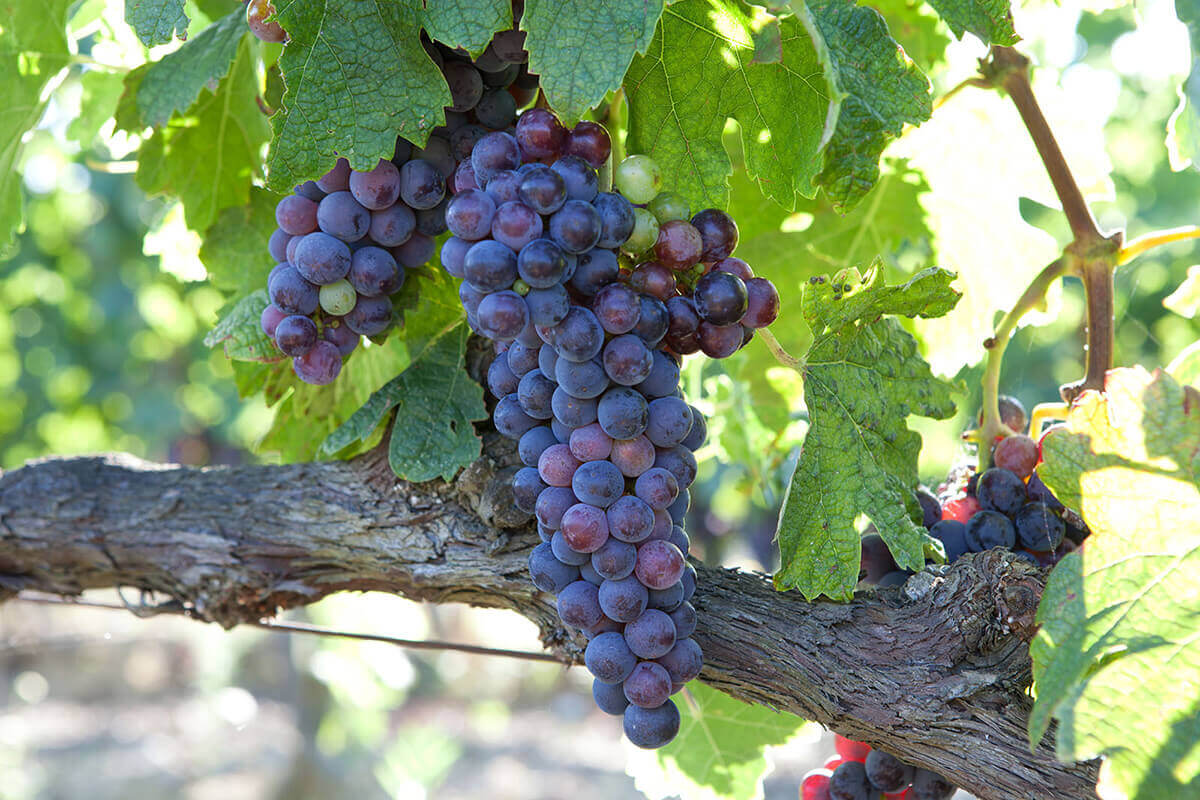
Merlot grapes on the vine at Masseto
It turned out that apparently a fair whack of what the American public was buying as Chilean Merlot was actually a grape called Carmenere, which originated in Bordeaux and was used as a minor blending variety only. After the devastation of phylloxera, many thought it extinct and no one was replanting it. Carmenere was later found in both Italy and Chile. In both countries, it was originally mistaken for other varieties, which did not encourage sales.
And then there was the Sideways Effect. Right in the middle of the Merlot boom, around 2004, along came a small and rather enjoyable film, Sideways, where Paul Giamatti (one of the actors, who played a wine-snobbish, struggling author) declares he is not drinking any more Merlot, though he is perhaps a little more forceful than that. His disdain for the grape took off like wildfire and sales plummeted. Literally. Because of the thoughts of a fictional character. Humanity is very strange at times.
At the time, Merlot was 20% of California’s red wine market. Before long, it was down to 13%. While it has made a comeback, it has never quite readjusted its halo to sit as it once did.
Merlot in general has certainly made somewhat of a comeback, but it is the great Merlots that are of interest to us here. If we return to the late 90s, a local fine wine retailer would hold a series of great wine events and dinners (we all know the sort of thing – wine lovers hold them all around the globe), and decided to explore the great Merlots.
The plan was a dinner, with three flights of the world’s best, six each bracket, and served blind. We knew Petrus would be included and a few other Merlot dominant top Bordeaux – the Right Bank. St Émilion is planted to around 60% Merlot while Petrus is 80%. A wine like Petrus is almost 100% Merlot – usually it might include a dollop of Cabernet Franc.
Anyway, these memories meant it was time to rummage around in the old boxes full of notes. Miraculously, I found the relevant notebook. June 1998 (as one might imagine, I have a lot of old notebooks and boxes galore). The night kicked off with a couple of Sparkling Merlots, nuff said, before we moved to Chilean, bargain Italian, and even an impressive South African Merlot. A couple from the Napa, a New Zealand example (a superb Fromm ‘La Strada’) and a number of the better Australians of the day – Mt Mary, Oakridge, Heggies, Pikes, Clarendon Hills and Irvine.
Among the French Merlots, or Merlot-dominant wines, were several from the perhaps underwhelming 1994 vintage – Ausone, Madelaine and Trotanoy, as well as the 1982 Vieux Chateau Certan, a great year. The Petrus was from the acclaimed 1995 vintage.
As is the way of these things, the big guns tend to be served in the final bracket – build up to the big crescendo! So we knew that the Petrus would be there, in bracket three, and while we did not know all the other wines, we expected big things.
My notes reveal we certainly got them – remember, these were all served blind and we had no idea what they actually were at the time we were tasting them.
The final four of the third bracket included the 1992 James Irvine Grand Merlot, the best of the Aussies, and the 1994 Ausone, which also impressed. But the two towering wines of the event were also there. For me, the fourth wine in the bracket was the star and I picked it as the Petrus. I was not sure what the final wine was, but it was also a superb Merlot. Two amazing wines. Most attending had the Irvine, Petrus, and the mystery wine as their top three, in varying orders.

Masseto wine vintage 1993
Masseto wines
Then the reveal. Wine six was the 1995 Petrus, but wine four, for many of us the superstar on the night, was something called Masseto, an Italian Merlot from the 1993 vintage. At the time, none of us had even heard of Masseto, let alone had any idea that an Italian Merlot might top one of the most famous wines on the planet. It was an obscure Italian Merlot back then, but all that would soon change.
My notes back then noted an earthy wine with a touch of brambles and undergrowth. Good structure and complexity. Coffee bean notes with hints of mocha. A superb, silky wine with the finest of tannins, great length and balance. Mouthfilling yet elegant. A great wine.
A few days later, I was visiting a retailer out of town and asked about the wine. They had a single bottle, actually a magnum, of that very wine, the 1993. It took some convincing but eventually, they sold it to me, the price at the time for the magnum, less than $200. Oh, those really were the days.
In preparing this piece, I checked a local retailer to see if they had any and if so, pricing. Turns out, surprisingly as quantities are minimal and demand is massive, that they do have a range of vintages. All were POA with the exception of the latest release, the 2019, which was AUD$3,000. It may be possible to find it for a little less if you look around, but realistically, so little ever makes retail shelves that if you want it, grab it at any price.
Over the next few years, I would pick up a single bottle from occasional vintages (there simply was no more than that available) as the price crept higher. It sat around the $180 mark for a while, back around the turn of the century, and then suddenly exploded. I could not get a bottle, even at many times that price. If anything, it is even harder to source today. At the time, I was told that the entire allocation for Queensland, Australia, was six bottles.
As happens all around the world, with such limited quantities, these wines rarely hit the shelves and ordinary wine lovers never get the chance. They are allocated to the top customers or restaurants – who can blame them. Word had it that one of our major retailers grabbed the lot back in those days (I am not complaining – it was through his generosity that the 1993, as well as the Petrus, was included in that dinner back in 1998), but a mate of mine who worked for him would always put a bottle aside for me. Those were the days, indeed.
These days, the majority is sold through the Bordeaux merchant system, ‘Place de Bordeaux’, which does deal with a few non-Bordeaux wines, but only those of great quality.
Call it a cult wine, a unicorn wine, whatever you like, but grab every chance you get to try it.
So what is Masseto? Today, it sits aside Petrus as one of the very best Merlots made anywhere and one of the great wines of the world. Unlike Petrus, its genesis is rather recent, dating only back into the 1980s. Its first vintage was 1987, although a 1986 was made (a training wheels wine, if you like, very much like the experimental 1951 Penfolds Grange). It was never commercially available.
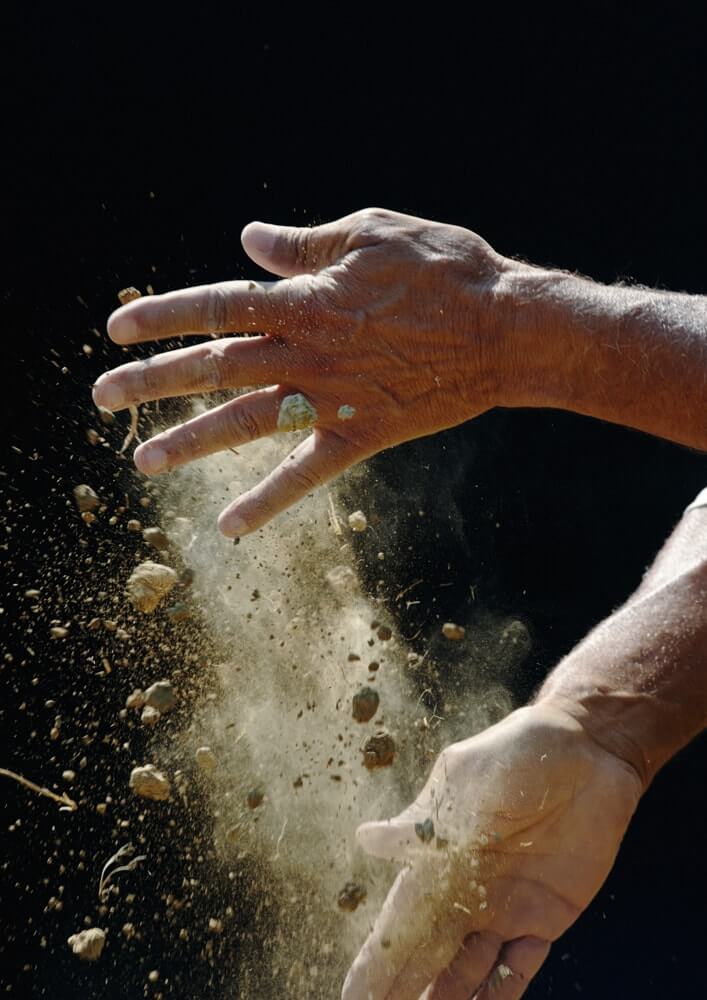
Masseto clay soil
It is said that the legendary Napa winemaker, Andre Tchelistcheff, first recognized the potential of the unloved hill, 6.6 hectares, a former quarry, with its blue clay and rocks, sitting around 120 meters above the sea-level. Tchelistcheff worked as a consultant to the estate until 1989 and was subsequently succeeded Michel Rolland. The Italian word for rock is apparently ‘masso’, and it is from this that the name, Masseto, comes.
In 1981, Ludovic Antinori, from the legendary Italian wine dynasty, founded Tenuta dell’ Ornellaia, today one of the great SuperTuscans (first vintage was 1985). It was to Ludovic that Tchelistcheff first recommended the site, which neighboured Ornellaia, which would become the Masseto vineyard. He decided that a Merlot did not quite fit as Ornellaia’s second wine and so it was released under its own tag, as effectively a separate entity.
The Frescobaldi family, another legendary Italian wine dynasty, have owned Masseto (via Ornellaia) since 2005. The Robert Mondavi Winery took a small interest in Ornellaia in 1999 and by 2002, was the owner, with a “partnership” with the Frescobaldi family. In 2005, the Frescobaldi family made a full purchase from the Constellation corporation, which had acquired Mondavi prior to this, although it does seem that there are various versions of the ownership two-step.
Axel Heinz is the estate director for both Ornellaia and Masseto.
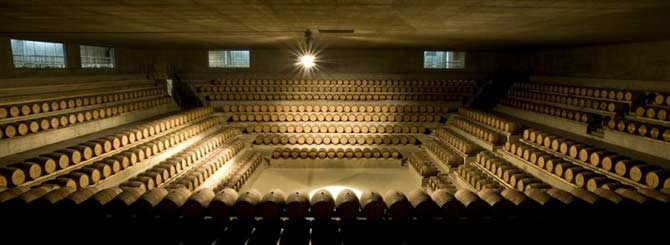
Masseto cellar
In 2017, Masseto opened its new cellars, a modern, underground facility, which works by gravity. Prior to that, production was at the Ornellaia facility. The annual production sits around 30,000 bottles, similar to that at Petrus. As Alex Heinz says, “our winemaking is about reducing the process, reducing intervention, with a ‘less is more’ philosophy.” The new winery is likely to take this brilliant wine to even higher standards – something to get very excited about.
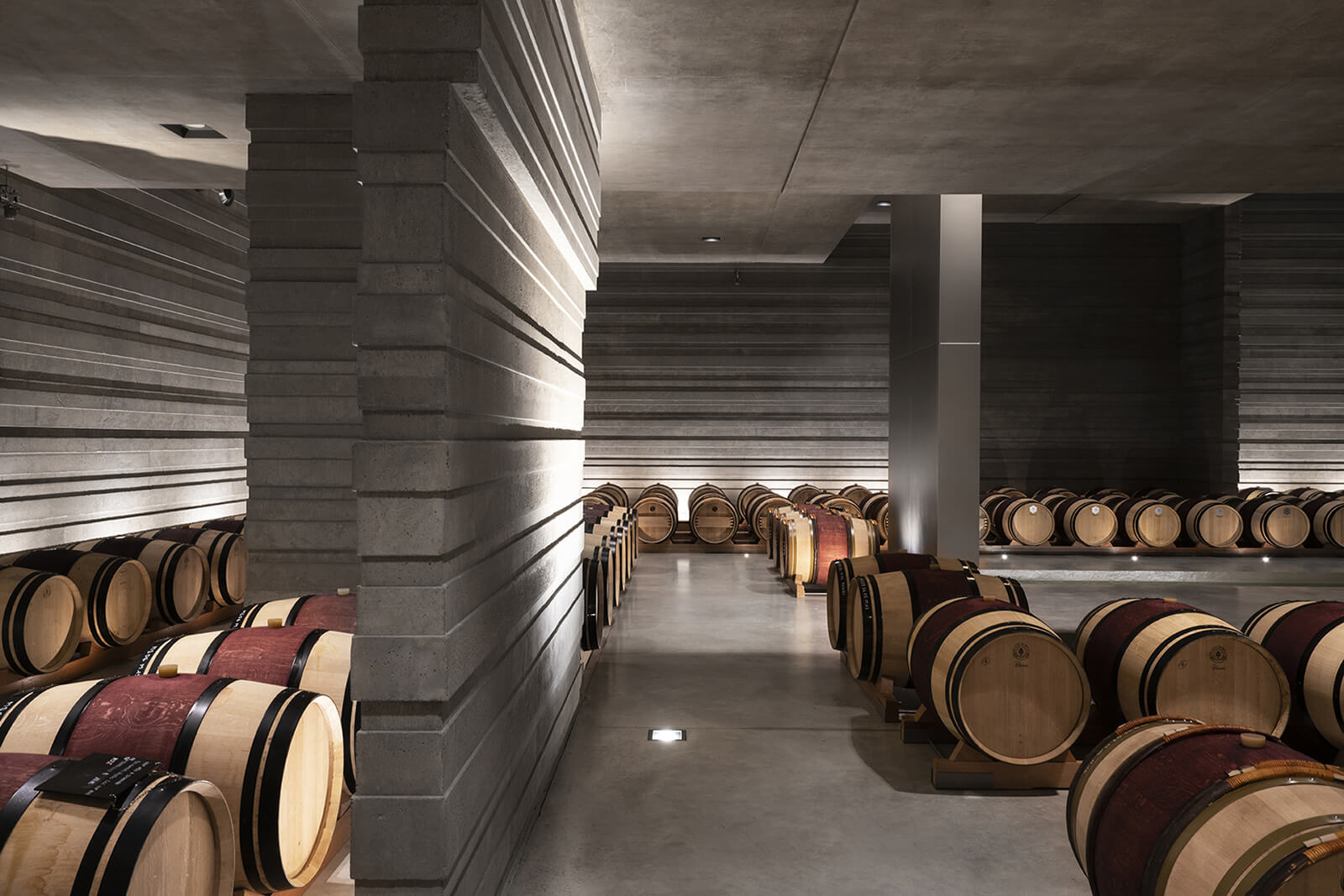
Masseto cellar
Masseto is very much a maritime wine, with the vineyard sitting just ten kilometers from the Tyrrhenian Sea. There are, of course, ‘maritime wines’ all around the globe and a few have achieved greater status than others. As simply one example, the amazing Cabernets and Chardonnays from Margaret River in Western Australia. For Masseto, it is considered that the sea breezes moderate the temperatures and provide a slower ripening period, assisting the balance of the wine.
The soils are based on what was once a seabed millions of years ago. The team has divided the vineyard into three sub-plots – Junior, Centrale and Alto. It is the Alto sub-plot which is dominated by the blue clay (Pliocene clay) with sand and fossils. There are reports that the grapes harvested from here are considered the heart and soul of the wine, while others reports quote Heinz as suggesting that the heavy clay slope of Centrale is the crucial sector. Perhaps it is a case of the final wine being greater than the sum of its parts.
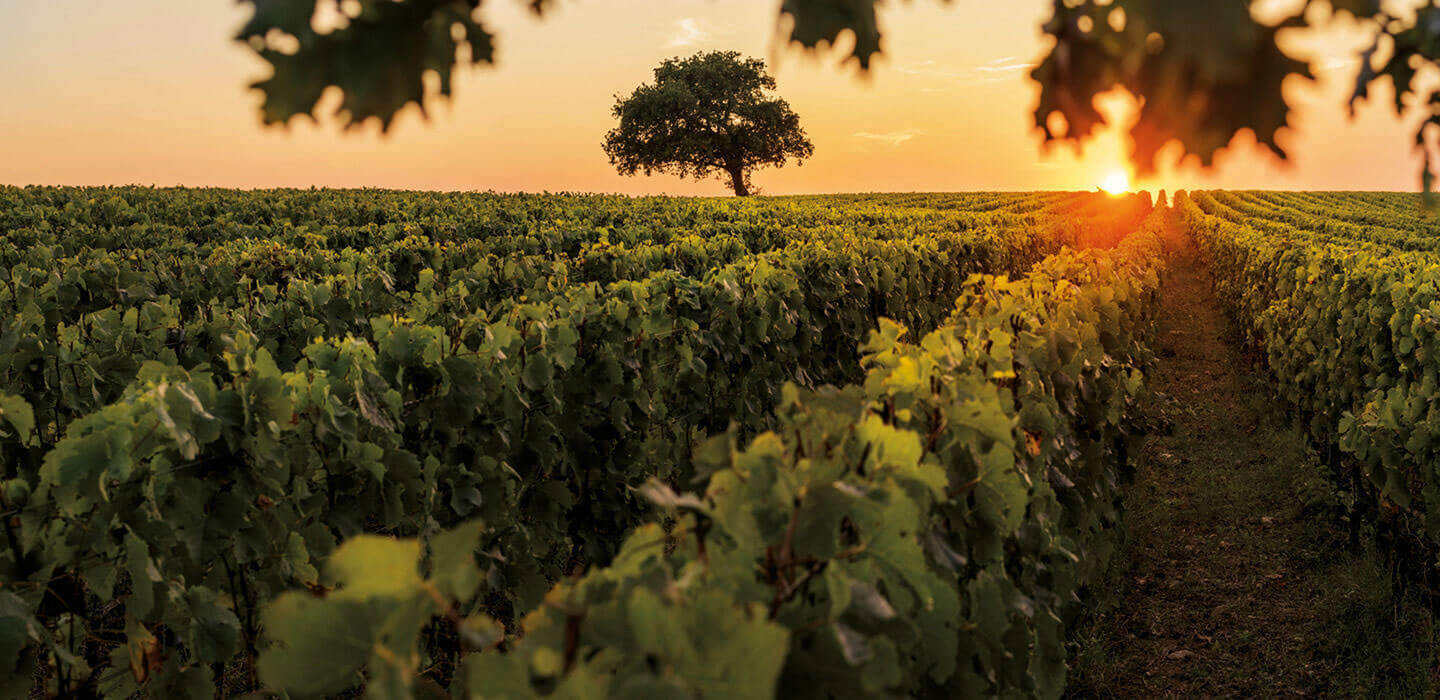
Masseto vineyards
From Heinz, “the power and almost intimidating tannic structure of ‘Masseto Centrale’, the firmer and trimmer texture of ‘Masseto Alto’, and the softer character of the lower part of the vineyard which we like to call ‘Masseto Junior’.” There is apparently about 1% Cabernet Franc in the vineyard and in some recent vintages, it has been included.
The winemaking has been described by Heinz as “a balancing act, one feels like a tightrope dancer always on the edge of a precipice.” Heinz joined as winemaker in 2005 and was later promoted to estate director for both Ornellaia and Masseto. The grapes are harvested in several tranches, with harvest usually from the end of August through to perhaps even as late as early October.
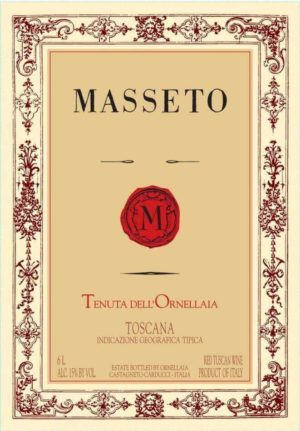
Masseto wine label
Manual destemming, grapes are individually selected (the price is not simply a reflection of its scarcity) and then gently crushed. Fermentation, for three to four weeks, is in concrete tanks, before the wine is placed in French barriques, 100% new, for a year’s maturation. The team discovered very early that the wine could easily handle 100% new oak in most vintages. At this stage, all the individual components are finally blended and the wine then spends another two years in barrel and a year in the cellar after bottling.
From the 2017 vintage, a second wine, Massetino, has been released. It is Merlot blended with some Cabernet Franc, and it spends a year in barrel, 50% new, before blending and then a further three months in the cellar. I have never seen the wine.
As with wines like Sassicaia and Ornellaia, Masseto is not eligible for DOCG status, which is the highest level of classification for Italian wines. These are all basic vino di tavola. It was Sassicaia that led the way, prepared to forego DOCG status and live with the basic bottom standard, because the use of grapes such as Cabernet Sauvignon, Merlot and others was not sanctioned.
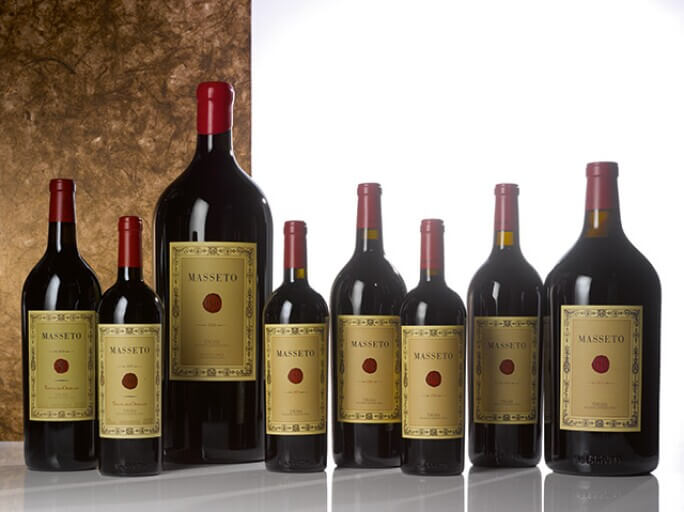
Masseto wines (photo courtesy Sothebys)
These wines are now known as Super Tuscans. Sassicaia, by the way, was established by Ludovic’s cousin. These wines may be tagged as basic, but they are magnificent wines by any standards. Indeed, critics have regularly given vintages of Masseto the full 100 points, or close. Tiny quantities might get people interested. Sublime quality gets them obsessed.
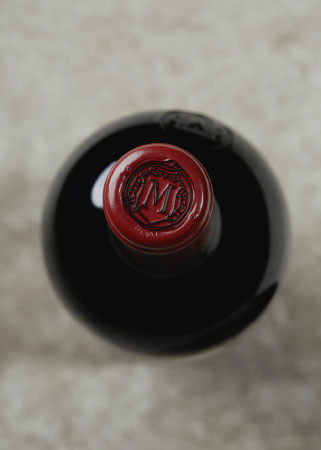
Masseto cork seal
Worth noting that in these days when fraud and fakes is of such concern, since 2013, Masseto has used a seal with a unique code. Enter it on their website and you’ll get all the information you need.
So what does Masseto taste like? I can add notes from a number of past vintages but, tragically (and yes, I am aware that there are levels of tragedy and this probably is not high on the overall scale), I have not tasted one recently. For me, it brings forth memories of plums, a dusting of chocolate and mocha, hints of coffee beans, spices and black fruits. Well structured, excellent length and balance and with a cushiony texture and cashmere-like tannins.
Put simply, Masseto should be a bucket list wine for every wine lover, though price and availability make it a tough one.
Might be time to have a search through some of those cases at the back of the cellar and find that 1993.
For more information, please visit www.masseto.com/en/
You might also enjoy:
Soldera Wines: Sensational Italian Tuscan With A Hollywood-Worthy Backstory
Leave a Reply
Want to join the discussion?Feel free to contribute!



A quick update.
Needless to say, the very day after we publish our piece, Axel Heinz announces he is resigning his post at both Ornellaia and Masseto to loom to other challenges in France. No word on a replacement or just what the new challenges will be.
Further update. Heinz has joined Chateau Lascombes in Bordeaux.